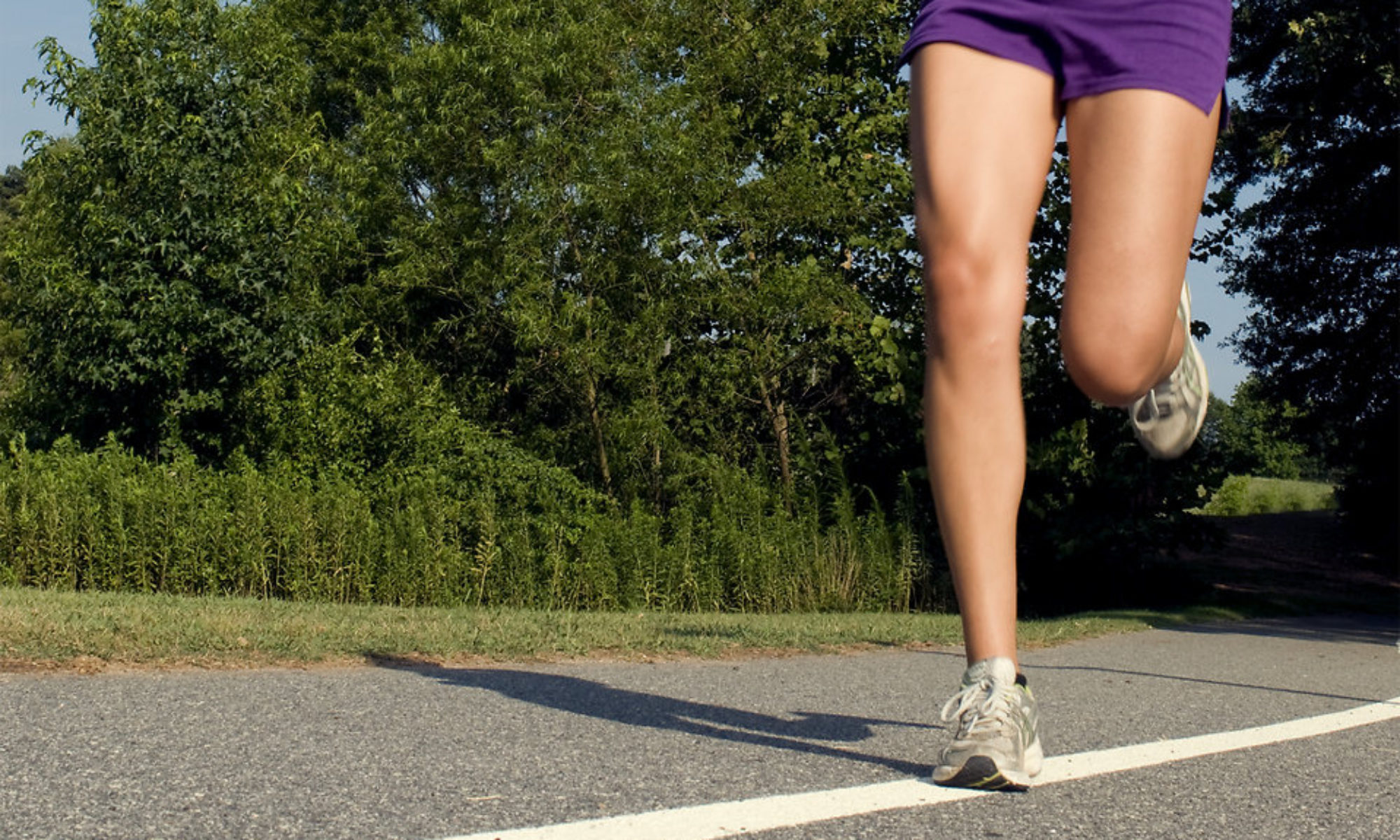Plantar fasciitis is foot pain which is typically located on the sole of the foot. Also, this pain is typically the worst with the first step out of bed in the morning. There is debate over whether plantar fasciitis is truly an inflammatory condition of the fascia under the foot. However, pain at the bottom of the foot or under the arch, worse in the morning, and worse with activity, is termed plantar fasciitis.

Plantar Fasciitis Tips
- Buy and Wear Excellent Shoes
- Don’t Ignore the Calf Muscles
- Begin Strength Training for Relief
Wear Excellent Shoes
There are many plantar fasciitis tips out there, most won’t matter if you wear bad shoes. Foot pain is easily exacerbated or made worse with poor footwear. Furthermore, if you are trying to reduce your symptoms and pain, paying close attention to the type of shoe you wear can have rapid benefits. A good quality running shoe that is well fitting is a must-have.
If you choose ill-fitting or non-supportive shoes such as flip-flops, flats, heels, slides, or dress shoes, it is highly likely your symptoms will be made worse, and the pain will not subside. A high quality sneaker which provides heel cushioning and improves your gait is your best option to combat plantar fasciitis pain.
Also, purchasing your shoes from a running store, even if you don’t run, can be a great choice as the staff can often evaluate your foot size, gait, and provide you with more and better information than a regular retailer.
Don’t Neglect the Calf Muscles
Secondly, although your symptoms may be local to your heel or underneath the foot, the calves often play an important role in plantar fasciitis pain. Two muscles primarily make up the calf. Gastrocnemius and soleus are their names, with “gastroc” being the larger of the two. These muscles combine into the Achilles’ tendon which inserts at the heel and is contiguous under the foot with the plantar fascia.
When the calf is tight and the muscles pull on the Achilles’ tendon, the extra tension can irritate and stretch the plantar fascia and tendon insertion at the heel, prolonged or repeated irritation can lead to pain and dysfunction at these sites. Often times stretching and soft tissue therapy is recommended for the calf muscles to reduce and eliminate this tension.
One popular method of relaxation to the calf muscles is to wear a night sock or splint while you sleep, putting the muscles and fascia on stretch through the whole evening. Many people get good results from wearing this type of support, but most people will still have some pain even with massage, foam rolling, icing, and splinting.
Passive interventions such as those previously discussed can all help. However, to have the biggest impact on your symptoms, a combination of treatments and interventions might work best. What I recommend to most patients is a multi-pronged attack plan. This includes a new pair of excellent shoes and some type of passive intervention. For example, calf massage or foam rolling. Also, joint mobilization or manipulation to any restricted joints of the foot or ankle. Then, and this is the most important aspect, gradual exposure to loaded exercise. Strength training of the affected leg.
Strength Training to Relieve Symptoms
Active interventions are those steps a patient undertakes to heal themselves. A great clinician will act as a guide to place the patient on the right path. When attempting relief from foot and plantar fascia pain, you can not ignore exercise. This tenet applies to many ills of the body, from headaches to lower back pain, sometimes the best medicine is to get moving.
In the case of plantar fasciitis, what needs to move is your lower leg, under load. Recent studies point to better outcomes with a simple progressive strength training routine of unilateral calf raises performed every other day.

First, elevate yourself using a step or small platform. Then, roll a towel and place across the step where your toes will be located. This allows the toes to be in extension during the exercise. Lastly, with the rest of your foot hanging out in space, slowly raise and lower your heel for one repetition. Count to three on the way up, hold for a two count at the top, and then take another three seconds to lower your foot. That is one full rep.
Typically you would start a program by performing 3 sets of 12 repetitions every other day. As time goes on the exercise is progressed with added weight or increased reps and sets. Weight can be increased by wearing a backpack as you perform the exercise and gradually adding more items into the backpack each week.
Get Help for Your Symptoms
Hopefully these plantar fasciitis tips will provide you with real relief if you are a recent or long term sufferer. If you have tried these or other methods without relief, you may need a different approach. Don’t hesitate to reach out and get some help, because not every case responds the same.
About the Author:

Dr. Erik Reich is a chiropractor in Meriden, CT. He practices at Omni Physical & Aquatic Therapy Center, Inc. . Where he treats all types of patients from high school athletes, seniors, victims of trauma such as auto accidents, laborers, and desk jockeys. Spending time with his wife and son, and their Boston terrier, is something Dr. Reich also enjoys.
